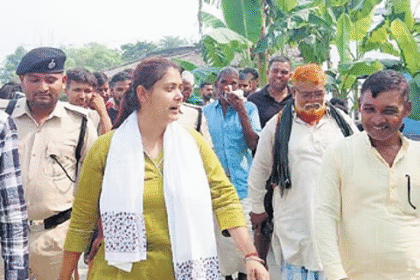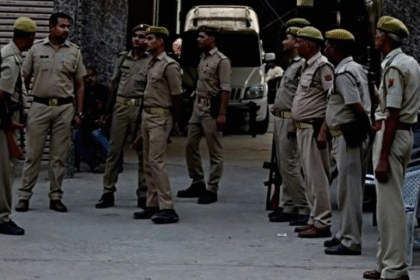Astronauts from India, Poland, and Hungary Launched on First Space Station Mission
On June 25, 2025, the world witnessed a significant milestone in the evolving narrative of human space exploration. For the first time in history, astronauts from India, Poland, and Hungary embarked on a joint mission to a space station, symbolizing not just technological cooperation, but a broader diplomatic, scientific, and aspirational alliance beyond Earth’s atmosphere.
As their spacecraft soared into the thermosphere aboard an international launch vehicle, millions on Earth—especially in New Delhi, Warsaw, and Budapest—held their breath. The mission was not only a display of engineering brilliance and astronautical precision but also a triumph of international unity and ambition.
This mission signals the beginning of a multipolar space era, where collaboration is no longer dictated solely by Cold War superpowers or economic hierarchies, but by shared goals in science, sustainability, and exploration.

The Mission Overview – Objectives, Crew, and Collaborating Agencies
The spaceflight, launched from a European-led facility with support from private global contractors, had the following key objectives:
- Deploying and testing new life-support systems for future long-duration missions.
- Conducting microgravity-based scientific experiments related to climate modeling, agriculture, and biomedical sciences.
- Training astronauts for joint command operations under multinational leadership protocols.
- Expanding docking capacity and logistics architecture aboard the orbital station.
The crew included:
- Wing Commander Shubhanshu Shukla from India: a seasoned test pilot and aerospace engineer, previously involved in India’s Gaganyaan program.
- Lieutenant Piotr Wójcik from Poland: an astrophysicist and data systems specialist, with deep expertise in solar weather phenomena.
- Dr. Eszter Nagy from Hungary: a biomedical researcher focusing on the effects of zero gravity on cellular regeneration.
Together, they form the TriOrbital Crew-1, selected not just for their technical excellence, but also for their proven ability to collaborate across linguistic, scientific, and cultural boundaries.
India’s Growing Space Legacy – From Gaganyaan to Global Collaboration
India’s journey to this mission was long and deliberate. Since its Mars Orbiter Mission (Mangalyaan) and the Chandrayaan series, India has proven its cost-effective, high-precision space capabilities. However, this mission marks a new turn: active collaboration beyond regional or bilateral partnerships.
Under the leadership of ISRO and with strong backing from the Indian Space Research & Diplomacy Division (ISRDD), India has:
- Invested in space diplomacy across Eastern Europe, Latin America, and Africa.
- Accelerated the training of internationally deployable astronaut teams.
- Proposed a model of “equal skies, shared science,” advocating mutual access to low-Earth orbit facilities.
Commander Shubhanshu Shukla’s participation was not accidental. As a vocal advocate of international research synergy, his selection reflected India’s intent to lead not just from launchpads, but from lab benches in orbit.

Poland’s Cosmic Comeback – Reclaiming Its Scientific Vanguard
For Poland, this mission symbolizes a return to the high table of space science, decades after contributing to Soviet-era orbital experiments. In recent years, Warsaw has:
- Reinvigorated the Polish Space Agency (POLSA).
- Partnered with EU aerospace entities to strengthen satellite programs.
- Promoted STEM education with space-focused curricula at both university and high-school levels.
Lieutenant Piotr Wójcik’s trajectory mirrors this renaissance. Raised in Kraków, educated in Paris, and trained in Houston, he represents a new European identity in space—cosmopolitan, technically elite, and internationally attuned.
Poland’s role in the mission wasn’t limited to personnel. It supplied key thermal control hardware for onboard labs and developed algorithms for real-time telemetry optimization, crucial for coordinating multi-agency systems.
Hungary’s Historic First – Biotech in Orbit
Hungary’s inclusion in the mission is nothing short of historic. While the country has had minimal presence in human spaceflight since Bertalan Farkas’s 1980 mission, this joint operation marks its first step into the modern era of orbital research.
Dr. Eszter Nagy, a leading figure in the Budapest Biomedical Innovation Center, was specifically tasked with conducting:
- Stem cell division trials in microgravity.
- Radiation shielding efficiency assessments for human tissue.
- Cross-checks of Earth-orbit immune response data with ground-based simulations.
Budapest’s contribution to the mission also included advanced biometric wearables, capable of analyzing live astronaut data through AI modules hosted on Earth.
The Hungarian government declared the launch a “national day of scientific pride,” as citizens gathered in public squares to watch the live broadcast, cheering as Nagy’s voice echoed back from orbit.
A Political and Cultural Triumph
This mission is not merely scientific. It is also deeply political. In a world fractured by conflict, trade wars, and diplomatic mistrust, three nations—diverse in language, culture, and economic standing—have come together to build, fly, and explore as one team.
The mission was hailed as:
- A model for the future of multinational space governance, especially as private space stations begin to replace older ISS models.
- A soft power achievement, reflecting the shift from “space race” to “space partnership.”
- A diplomatic template for smaller or emerging space nations to stake their claim without being dominated by superpower blocs.
All three leaders—India’s Prime Minister, Poland’s President, and Hungary’s Premier—issued joint statements celebrating “this new era of cooperation, where science guides strategy, and humanity leads ambition.”
A Moment That Echoes Beyond Earth
As the TriOrbital Crew-1 orbits above us, their presence in space signals more than a technological feat. It represents a shared human longing for exploration, knowledge, and peaceful progress. This journey, begun on a summer morning in June 2025, is not just theirs—it belongs to the students watching from classrooms in Pune, Gdańsk, and Szeged, the engineers behind control panels, and the dreamers scanning night skies for their own stars to chase.
Also Read : Vikhroli Bridge Snarls: 3 Major Bottlenecks Frustrate 10,000+ Daily Commuters







